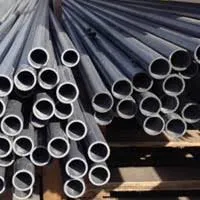
-
 Afrikaans
Afrikaans -
 Albanian
Albanian -
 Amharic
Amharic -
 Arabic
Arabic -
 Armenian
Armenian -
 Azerbaijani
Azerbaijani -
 Basque
Basque -
 Belarusian
Belarusian -
 Bengali
Bengali -
 Bosnian
Bosnian -
 Bulgarian
Bulgarian -
 Catalan
Catalan -
 Cebuano
Cebuano -
 China
China -
 China (Taiwan)
China (Taiwan) -
 Corsican
Corsican -
 Croatian
Croatian -
 Czech
Czech -
 Danish
Danish -
 Dutch
Dutch -
 English
English -
 Esperanto
Esperanto -
 Estonian
Estonian -
 Finnish
Finnish -
 French
French -
 Frisian
Frisian -
 Galician
Galician -
 Georgian
Georgian -
 German
German -
 Greek
Greek -
 Gujarati
Gujarati -
 Haitian Creole
Haitian Creole -
 hausa
hausa -
 hawaiian
hawaiian -
 Hebrew
Hebrew -
 Hindi
Hindi -
 Miao
Miao -
 Hungarian
Hungarian -
 Icelandic
Icelandic -
 igbo
igbo -
 Indonesian
Indonesian -
 irish
irish -
 Italian
Italian -
 Japanese
Japanese -
 Javanese
Javanese -
 Kannada
Kannada -
 kazakh
kazakh -
 Khmer
Khmer -
 Rwandese
Rwandese -
 Korean
Korean -
 Kurdish
Kurdish -
 Kyrgyz
Kyrgyz -
 Lao
Lao -
 Latin
Latin -
 Latvian
Latvian -
 Lithuanian
Lithuanian -
 Luxembourgish
Luxembourgish -
 Macedonian
Macedonian -
 Malgashi
Malgashi -
 Malay
Malay -
 Malayalam
Malayalam -
 Maltese
Maltese -
 Maori
Maori -
 Marathi
Marathi -
 Mongolian
Mongolian -
 Myanmar
Myanmar -
 Nepali
Nepali -
 Norwegian
Norwegian -
 Norwegian
Norwegian -
 Occitan
Occitan -
 Pashto
Pashto -
 Persian
Persian -
 Polish
Polish -
 Portuguese
Portuguese -
 Punjabi
Punjabi -
 Romanian
Romanian -
 Russian
Russian -
 Samoan
Samoan -
 Scottish Gaelic
Scottish Gaelic -
 Serbian
Serbian -
 Sesotho
Sesotho -
 Shona
Shona -
 Sindhi
Sindhi -
 Sinhala
Sinhala -
 Slovak
Slovak -
 Slovenian
Slovenian -
 Somali
Somali -
 Spanish
Spanish -
 Sundanese
Sundanese -
 Swahili
Swahili -
 Swedish
Swedish -
 Tagalog
Tagalog -
 Tajik
Tajik -
 Tamil
Tamil -
 Tatar
Tatar -
 Telugu
Telugu -
 Thai
Thai -
 Turkish
Turkish -
 Turkmen
Turkmen -
 Ukrainian
Ukrainian -
 Urdu
Urdu -
 Uighur
Uighur -
 Uzbek
Uzbek -
 Vietnamese
Vietnamese -
 Welsh
Welsh -
 Bantu
Bantu -
 Yiddish
Yiddish -
 Yoruba
Yoruba -
 Zulu
Zulu
fiberglass holding tanks
The Advantages of Fiberglass Holding Tanks
In the world of industrial storage solutions, fiberglass holding tanks have emerged as a superior alternative for various applications. These tanks are made from a combination of glass fibers and resin, creating a lightweight yet incredibly durable storage solution. Their versatile properties make them ideal for a wide range of uses, from wastewater treatment to chemical storage and beyond. Below, we explore the key advantages and applications of fiberglass holding tanks.
Durability and Longevity
One of the standout characteristics of fiberglass holding tanks is their exceptional durability. Unlike traditional materials such as steel or concrete, fiberglass is resistant to corrosion, rust, and chemical reactions. This resilience ensures that fiberglass tanks can withstand harsh environmental conditions and hostile substances without degrading over time. When properly maintained, these tanks can last for decades, offering a cost-effective storage solution in the long run.
Lightweight and Easy to Install
Another significant advantage of fiberglass holding tanks is their lightweight nature. Fiberglass tanks are much lighter than concrete or metal alternatives, making transportation and installation considerably more manageable. This reduced weight allows for easier handling and installation, which can significantly cut down on labor costs and time. Furthermore, many fiberglass tanks come with pre-fabricated designs, allowing for quick assembly, making them an ideal choice for projects that require prompt execution.
Versatile Applications
Fiberglass holding tanks are incredibly versatile, accommodating a broad spectrum of liquids and materials. They find applications in various industries, including agriculture, water treatment, food processing, and chemical storage. For example, in the agricultural sector, fiberglass tanks are used for the storage of fertilizers and pesticides, providing a safe environment that reduces the risk of contamination. In wastewater treatment facilities, fiberglass tanks are employed to hold and process water, ensuring compliance with environmental regulations.
fiberglass holding tanks

Resistance to Temperature Extremes
One notable feature of fiberglass holding tanks is their resistance to temperature extremes. These tanks can maintain structural integrity under a wide range of thermal conditions, which is paramount when storing substances that may change states due to heat. This capability ensures that the contents remain stable and safe, whether exposed to boiling temperatures or freezing conditions.
Cost-Effective Maintenance
Maintaining a fiberglass holding tank is generally less costly compared to its metal or concrete counterparts. Due to the smooth surface of fiberglass, cleaning becomes less labor-intensive, which reduces overall maintenance costs. Furthermore, many modern fiberglass tanks are designed with UV protection, extending their lifespan even further and minimizing the need for frequent replacement.
Environmental Considerations
In today’s world, environmental concerns are more prominent than ever. Fiberglass holding tanks are designed with sustainability in mind. Their longevity means that they do not need to be replaced frequently, which in turn reduces waste. Moreover, the manufacturing process of fiberglass can be less harmful to the environment when compared to the mining and processing of metals for tank production.
Conclusion
In conclusion, fiberglass holding tanks represent a robust and flexible solution for various storage needs across multiple industries. Their unique properties, including durability, lightweight design, and resistance to corrosion and temperature extremes, position them as a go-to choice for storage applications. With the added benefits of cost-effective maintenance and environmental sustainability, it’s no surprise that fiberglass holding tanks are becoming an increasingly popular option in the market. As industries continue to evolve, embracing innovative solutions like fiberglass is essential for ensuring efficiency, safety, and environmental responsibility in storage practices.









